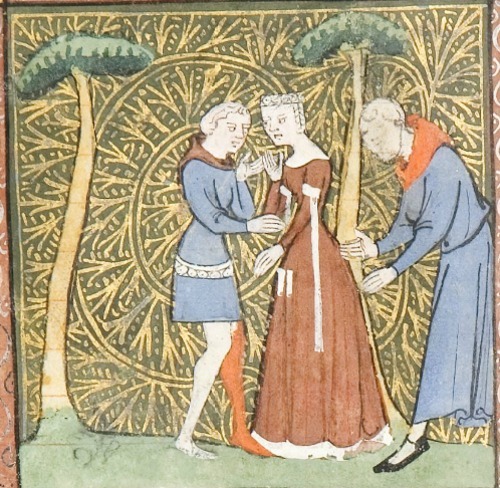
For example, two manuscripts in the Beinecke contain an index with similar topics for the classical author, Valerius Maximus (Beinecke MS 762 and Marston 37). Such kinds of topical indices could also be applied to texts perceived to be of a similar purpose. Sermonaries and biblical commentaries for example often have indices with topics like: abicere ‘to cast away’ abstinencia ‘abstinence’ ambulare ‘to walk’ abissus ‘abyss’… ypocrisis ‘hypocrisy’ ‘ zelum ‘zeal’ (compare Beinecke MS 1203, ff.2r-4v Marston MS 154, ff.1r-9v Marston MS 233, ff.76r-77v). A scribe would consult an index of a work of a relevant genre and then apply that to their manuscript. However, while John of Carnago created his index by reading the content of the manuscript – creating marginal titles and building an index from it – many scribes presumably derived their topics from other indices or alphabetical works. The index therefore loosely corresponds to the marginal titles but John of Carnago probably added more to a working note-book while expanding the titles into a more sentential format over the course of 15 months. Not all the entries in the index can be found in the margins, suggesting he did not compile his index directly from the margins and sometimes there are slight differences ( Amoris mulieris descriptio ‘description of the love of a woman’ in the margin ~ Amor mulieris est insatiabilis ‘the love of a woman is insatiable’ in the index). Likely John of Carnago read through his manuscript, noting down the marginal titles which he then tabulated in his index. But it nonetheless shows that indexers needed time after the completion of their work to read through the annotations and copy them out. Why did it take over a year to copy this index? In part, the colophon for the index explains that the scribe had been ill: ‘here ends the table made by John of Carnago during his illness’. Colophon dating the index to November 19, 1440. Colophon dating the main text to the morning of August 1439 on the feast of Saint Dominic.įigure 4 Beinecke MS 766, f.257v. A particularly fascinating example is Beinecke MS 766, where the scribe John of Carnago has copied out various epistles of St Jerome, leaving a colophon dating its completion to August 1439 and a second colophon at the end of the index dating it to November 1440.įigure 3: Beinecke MS 766 (Italy), f.249r. Other scribes likely used an intermediary notebook, making marginal annotations in their manuscripts and compiling these into a notebook and then copying out a final index. The indexer here notes the letter F beside an explanation of how the crown of wisdom is the fruit of fulness.

The scribe here has left space for each letter and then added chapter titles and rubrics afterwards.įigure 2: Marston MS 154 (Paris, XIV index made later in Spain), f.7v “F for Fructus (fruit)”. Similarly, in the case of Marston MS 154, a subsequent Spanish reader has gone through the manuscript, placing alphabetical letters in the margins and picking out topics to be placed in the index.įigure 1: Beinecke MS 224 (XV, Germany), f.182v. For one, the scribe may simply tabulate the titles and marginal notes in the main text (as for example Beinecke MS 224, where most of the entries match the annotations in the margins). The Beinecke collection provides a number of examples of how scribes created their indices. By using the term “index,” do bibliographers risk anachronism, imposing modern expectations of the back-of-the-book index on a premodern book?


When scribes labelled the “indices” in their manuscripts, they usually described them more broadly as tabulae (sometimes also repertoria or inventaria, ‘aids for finding’), terms which also encompassed various other textual apparatus from tables of contents to lexica and glossaries to concordances and synopses. With a modern book, the reader consults the index, looks up a key term and then locates the relevant pages or chapters in the main text, but this is not necessarily a good model for medieval reading. What is an index? The “index” is in some ways a misleading word for medieval manuscripts.


 0 kommentar(er)
0 kommentar(er)
